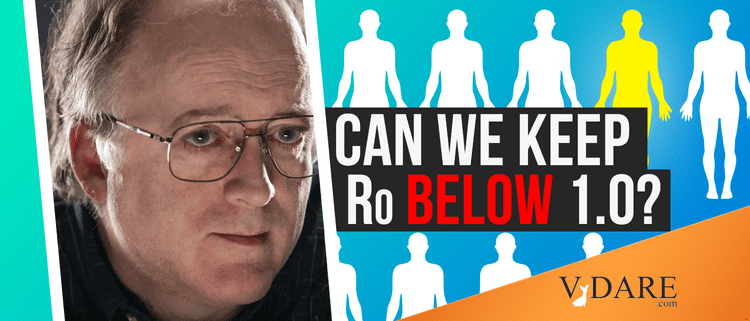From Gregory Cochran’s West Hunter blog:
What is to be done?
Posted on March 12, 2020 by gcochran9
We need enough lockdown and social distancing to drive the R0 below 1.0 – that doesn’t require much more effort than the intensity required to ‘flatten the curve’ and it has an enormous payoff – new cases fade away instead of growing! Like I said, there is no substitute for victory.
But we don’t want that lockdown to persist forever – it’s incredibly expensive. I estimate that China has lost >hundreds of billions of dollars in their current freeze. We will too …
All this must be paired with a crash program to develop effective therapies and/or means of prevention. If someone has an idea for a new drug, or a new method of treatment, he should rethink it and ask if it could be accomplished in half the time with twice the money, or for that matter with ten times the money. We should fund every plausible approach, a bit like the Manhattan project. Some would be surprising: for example, there is evidence that already having one viral disease (say influenza) can reduce your chances of catching another – true at both the population and individual level, perhaps because your interferon is revved up.
But the benefit supposedly only lasts during the 2 weeks or so you have the flu, so it’s not a permanent preventive.
Old-fashioned approaches (like serum therapy ) might be revived. We can scan the existing pharmacopoeia for something useful: we can mine HMO data to see if some common drug is already having a positive effect.
The US has the world’s strongest biomedical research community. We can do this – and we won’t be alone.
There are many different ways to create vaccines. It’s a little like the famous WWII code-breaking efforts, which looked for tiny weaknesses that could be exploited in different ways. It’s time to fund a wide range of attempts and perhaps pay for multiple efforts on each way.
We have a lot of smart people with skills that could be quickly repurposed to help in this quest. For example, I’m a big fan of fields like genome-wide associations studies in the social sciences and paleogenomics, but if those disciplines get set back for a year while their brightest lights pitch in on The Effort, I can live with that.
When we succeed, the lockdown will soon end. With a treatment or some form of prevention, we won’t have to worry about the ongoing cases in other parts of the world – and we could then help the rest of the world, which is no bad thing.
Cost is no object: there is no way to spend money on biomedical research that is in any way comparable with the cost of lockdown.
The US GDP was $21.4 trillion last year, so almost $2 trillion per month. If you lockdown half the economy, that’s almost a trillion dollars per month.
One advantage: we can cut some corners, because coronavirus is so dangerous. We thought vaccination against smallpox too hazardous (a disease extinct in the wild, and a vaccine that killed 1 in a million of those vaccinated and made about 1 in 100,000 seriously ill). In today’s situation, facing coronavirus, that level of side effect could perhaps be tolerated, at least until we came up with something better.
Careful analysis and simulation can minimize the cost. China has cut the R0 down to 0.3, but that’s overkill: at this point a relaxation that allowed some business to operate and pushed the R0 up to 0.8 would be fine. The rate of new cases would not increase from the current low level. If we relax a bit too much, R0 might creep a bit above 1.0, but with lots of testing and monitoring we could fix that before it caused much trouble.
Read the whole thing there.
[Comment at Unz.com]













